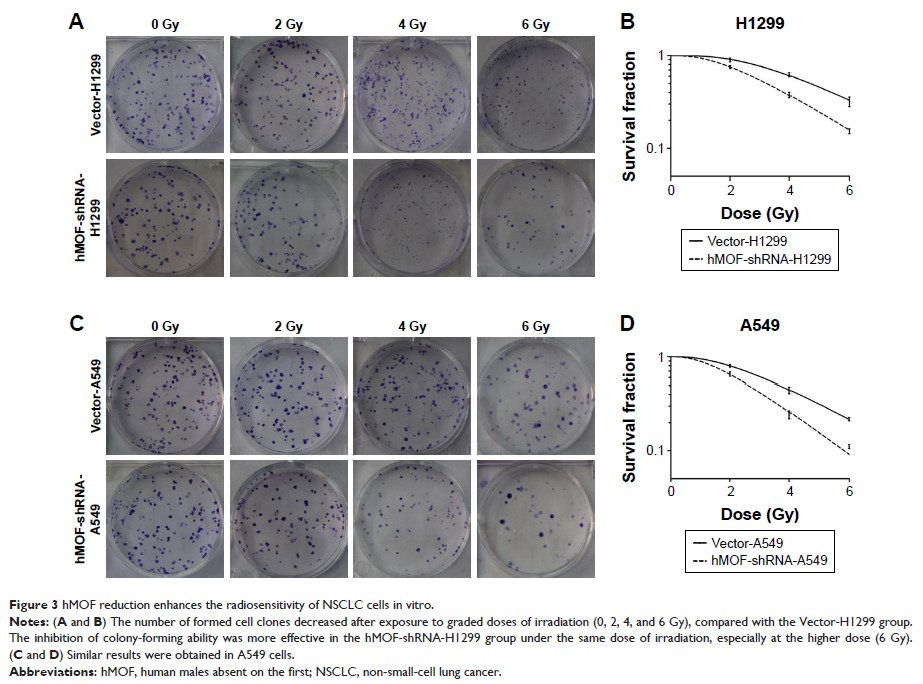9 1 2 3 6
论文已发表
注册即可获取德孚的最新动态
IF 收录期刊
- 2.6 Breast Cancer (Dove Med Press)
- 3.9 Clin Epidemiol
- 3.3 Cancer Manag Res
- 3.9 Infect Drug Resist
- 3.6 Clin Interv Aging
- 4.8 Drug Des Dev Ther
- 2.8 Int J Chronic Obstr
- 8.0 Int J Nanomed
- 2.3 Int J Women's Health
- 3.2 Neuropsych Dis Treat
- 4.0 OncoTargets Ther
- 2.2 Patient Prefer Adher
- 2.8 Ther Clin Risk Manag
- 2.7 J Pain Res
- 3.3 Diabet Metab Synd Ob
- 4.3 Psychol Res Behav Ma
- 3.4 Nat Sci Sleep
- 1.9 Pharmgenomics Pers Med
- 3.5 Risk Manag Healthc Policy
- 4.5 J Inflamm Res
- 2.3 Int J Gen Med
- 4.1 J Hepatocell Carcinoma
- 3.2 J Asthma Allergy
- 2.3 Clin Cosmet Investig Dermatol
- 3.3 J Multidiscip Healthc

hMOF 的减少可通过非小细胞肺癌中的同源重组途径增强放射敏感性
Authors Li N, Tian GW, Tang LR, Li G
Received 29 October 2018
Accepted for publication 15 February 2019
Published 23 April 2019 Volume 2019:12 Pages 3065—3075
DOI https://doi.org/10.2147/OTT.S192568
Checked for plagiarism Yes
Review by Single-blind
Peer reviewers approved by Dr Colin Mak
Peer reviewer comments 2
Editor who approved publication: Prof. Dr. Geoffrey Pietersz
Purpose: Human
males absent on the first (hMOF) is a histone acetyltransferase (HAT) and is
responsible for acetylating histone H4 at lysine 16 (H4K16). Recent studies
have indicated that hMOF is overexpressed in non-small-cell lung cancer (NSCLC)
as an oncogene. The aim of this study is to profile the prognostic roles of
hMOF in patients with unresectable stage III NSCLC undergoing definitive
radiotherapy (RT) and in the radiosensitivity of human NSCLC cells.
Materials and methods: The
expression of hMOF was detected in 24 normal and tumor-paired fresh-frozen
NSCLC tissue samples. The immunohistochemistry was conducted, and the
correlation of hMOF with clinicopathological parameters was studied in tissues
from 90 patients with unresectable stage III NSCLC who underwent definitive RT.
Radiation sensitivity was monitored using clonogenic assays in NCI-H1299 and
A549 NSCLC cell lines with hMOF knockdown.
Results: hMOF was
overexpressed in NSCLC tissues compared with non-cancerous tissues. Compared to
patients with downregulated hMOF, upregulated hMOF was observed in 51.1%
(46/90) of the patients, who showed a significantly worse 5-year survival rate
(5.4% vs 22.9%, P =0.025). hMOF expression was an independent
prognostic factor of unresectable stage III NSCLC patients who underwent
definitive RT. Silencing hMOF increased in vitro the sensitive enhancing ratio
(SER) of NSCLC cell lines and downregulated the expression of phospho-ataxia
telangiectasia mutated (p-ATM) and RAD51 after irradiation (IR).
Conclusion: Overexpression
of hMOF predicts poor prognosis in patients with unresectable stage III NSCLC
undergoing definitive RT. Downregulating hMOF might be a promising intervention
to improve the outcome after RT.
Keywords: prognosis,
NSCLC, hMOF, radiosensitivity, HATs
